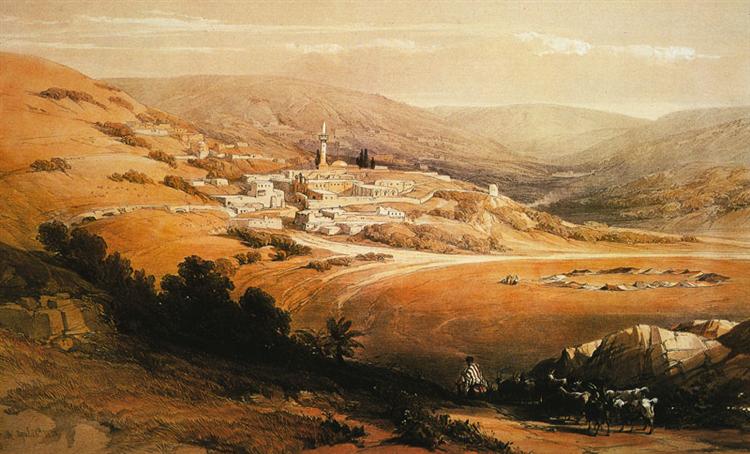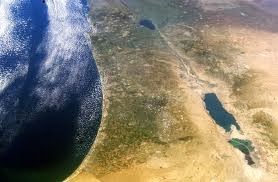Of all the places Jesus choose to set up shop, why Capernaum?
Jerusalem was the epicenter of religious life in his day. One would think he would settle there to be among a greater population density to spread is message and worship God at the Temple on a more consistent basis.
After all, the people thought God lived in the Temple, so why not place yourself in close proximity to your dad? (lol)
Jesus never gave us specifics as to why he decided to use Capernaum for his home base of operations but we can surmise why he did based on analysis of a few data points regarding the text itself, pragmatic dispositions, geography, geopolitics, and economics.
The Gospel of Matthew makes an unassuming passing statement in 4:12-13. Upon hearing of his cousin John's imprisonment, Jesus relocates to Galilee from Nazareth and specifically puts down roots in Capernaum.
Why?
Why not Bethany where his friend Lazarus lived?
Even around the Sea of Galilee, there were other Jewish towns (Chorazin, Bethsaida, Magdala) where he could have made an easy transition.
In order to piece together why Capernaum was Jesus' landing spot, it's important to first dissect where he came from-Nazareth.
To understand where you went, you must understand where you've been.
Nazareth is geographically located in Lower Galilee. Remotely couched in a resource-poor geological bowl, potential for an opulent lifestyle remained virtually zero. The town is built upon a particular rock type formed during the Senonian era. This type of rock is chalky, crumbles easily, doesn't retain water well, and is supbar for growing crops to sustain life. However, it is good for digging cisterns since the rock is very soft.
Peering down from atop the Nazareth Ridge into the Jezreel Valley, which houses some of the richest and most fertile alluvial soil in Israel, a stark contrast is easily observed that dichotomizes the open expanse of surplus in the valley against the limited wealth of Nazareth. No major international road passed through Nazareth; all the action took place below the town in the Jezreel Valley.
Think one stoplight town with a general store and one gas station in the middle of Kansas-that's Nazareth.
Now, listen to Nathaniel: "Nazareth! Can anything good come from there?" (John 1:46)
Jesus also broke a long standing, deeply embedded cultural norm that many overlook. First born sons were expected to care for their mothers if their husbands died. It's almost a given Jesus' father, Joseph, died sometime between Jesus' early adolescent years and the time he initiated his calling. Joseph isn't mentioned anywhere in the text post Jesus Temple encounter at age 12-13. Mary shows up for Jesus crucifixion. Joseph is MIA. We can safely assume Joseph died sometime in Jesus' adolescent years.
Leaving his mother and siblings to fend for themselves while Jesus pursued his marching orders must have caused significant conflict within the family. We have hints that his mother and siblings thought he was legitimately crazy (Mark 3:21). Jesus even takes pejorative jabs at his family, essentially saying they don't truly follow God (Mark 3:31-35). His own brothers blatantly mocked and attempted to goad him into performing a miracle to gain fame (John 7:1-5).
Tension in the family dynamics could have been another impetus for Jesus to get outta Dodge and move to a place he felt more at ease.
This rendition of Nazareth circa 1840 was painted by David Roberts during his tenure in the Holy Land. It gives a feel of what its size may have been in Jesus' day but also personifies its geographic situation, tucked away in a bowl surrounded by hills. Not much activity went on here.

Map of Galilee depicting proximity of Nazareth to Capernaum
Alternatively, Capernaum sits on a long, narrow strip of land along the northwestern shore of the Sea of Galilee at the base of the Rosh Pinna Sill. This barrier is comprised of a porous volcanic rock that is hard, durable, and lightweight making it ideal for tool implements. In Jesus day, Capernaum was known for it's basalt millstones (think Matthew 18:6) used to grind wheat into grain.Strategically located on a chokepoint on the major highway connecting Africa, Asia, and Europe that ran just beyond the town limits, Capernaum functioned as an economic turn style and a megaphone for current events dissemination. Merchants from various nations passed through this bustling beach town, heralding the news of the day from all parts of the world. Jesus' message of the Good News of the Kingdom of Heaven gained international exposure in Capernaum.
Jesus' profession as a builder/repair dude would have also been much more lucrative in Capernaum than in Nazareth. Wayfarers need cart wheels fixed, locals need doors repaired and stone objects fashioned, newcomers need homes built, and fisherman need boats repaired. Capernaum's robust economy offered a greater range of opportunities to generate more income for Jesus.
Capernaum also housed tax collectors (Matthew 9:9) and Roman military and government officials (Matthew 8:5) because it was a customs town stationed just inside Herod Antipas' district on the border of his brother Phillips' district. We read of Peter's origins in Bethsaida but he moves to Capernaum. Bethsaida was located in Phillip's district. Magdala further down the shore from Capernaum was known as a commercial fish salting export industry. If Peter resided in Bethsaida, he would have to cross the border into Antipas' territory and pay taxes on every fish he caught. By moving a few miles down the road to Capernaum, he could avoid fishing taxes.
Bethsaida sits just inside Philip's territory while Capernaum is the first town along the coast travelers hits passing into Antipas' territory from Philip's.
Peter and Jesus also became good friends and probably ended up living together. Matthew, Mark, and Luke all mention Peter's mother being healed by Jesus. Excavations in the late 1960's revealed a 1st century house that expanded into a church. By the 5th century, it fully converted into a Byzantine style octagonal church. Archaeologists believe this church to be Peter's home since it was venerated over time.Pic of St. Peter's Church in Capernaum

Another important geographical feature to consider is Capernaum's proximity to Antipas' capital of Tiberius. Maybe Jesus was pissed at Herod for incarcerating John and perhaps thumbing his nose at Herod Jesus moved literally right under his nose, proclaiming a dangerous anti-Roman polemic of the "Kingdom of Heaven." John's imprisonment does seem to be an odd impetus to compel Jesus to leave his home town and move to Capernaum. I'm not sure what to make of that.
Jesus spent his formative years as a blue collar builder in the backwoods of Nazareth until he decided to transition to Capernaum. The psychosocial dynamics of Jesus' family may have been the impetus for him to leave, but other factors also played a role. Galilee's zone of opportunity served as an attractive force for self-improvement and its tranquil environment (compared to Jerusalem) may have impacted Jesus' decision to uproot.





No comments:
Post a Comment